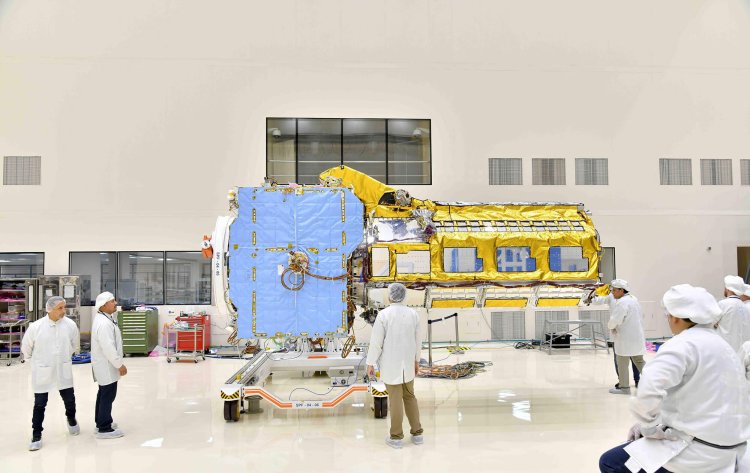NASA-ISRO Earth Satellite Under Development in India
The NISAR satellite, a collaboration between NASA and ISRO, is being assembled in Bengaluru, India.

The NISAR satellite, a collaboration between NASA and ISRO, is being assembled in Bengaluru, India. It is scheduled for launch in early 2024 and aims to track movements of Earth's land and ice surfaces with high precision. The satellite will provide valuable insights into various aspects such as forest dynamics, wetlands, and agricultural lands.
The satellite is about the size of an SUV and consists of two radar systems within its cylindrical radar instrument payload. The S-band radar is ideal for monitoring crop structure and surface roughness, while the L-band instrument can penetrate dense forest canopies to study tree trunks. Both radar systems can collect data day and night, even through clouds.
The payload components took a journey to reach this point. The S-band radar was constructed in Ahmedabad, India and then transported to NASA's Jet Propulsion Laboratory in California, where it was integrated with the L-band radar. The combined payload was later flown to the U R Rao Satellite Centre (URSC) in Bengaluru in March 2023.
At URSC, engineers and technicians collaborated with JPL teams to develop the main body of the spacecraft, known as the bus. The bus, covered in blue protective blanketing, provides power, navigation, pointing control, and communication for the mission. It incorporates components and systems from both ISRO and JPL.
Since the radar payload and bus were joined in June, NASA and ISRO teams have been working on cable routing between them. The satellite's solar panels and a large wire-mesh reflector, which will unfold from a boom, are yet to be attached. The reflector, measuring nearly 40 feet in diameter, will be the largest radar antenna of its kind in space.
The NISAR satellite is currently undergoing performance testing and will undergo environmental testing to ensure its readiness for launch and operational requirements in orbit. Afterward, it will be transported to the Satish Dhawan Space Centre for integration with ISRO's Geosynchronous Satellite Launch Vehicle Mark II rocket, and then launched into low Earth orbit.
NISAR represents the first hardware collaboration between NASA and ISRO for an Earth-observing mission. JPL leads the U.S. component of the project, providing the L-band SAR and various other components, while NASA contributes additional elements such as the radar reflector antenna, deployable boom, communication subsystem, and more. URSC leads the ISRO component, supplying the spacecraft bus, S-band SAR electronics, launch vehicle, and associated services and operations.
What's Your Reaction?
















